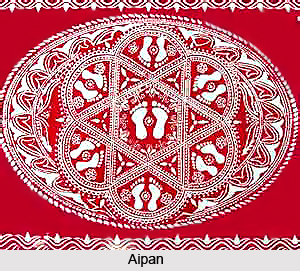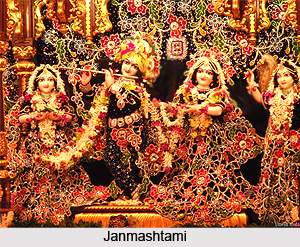 Culture of Nainital district in Uttarakhand is quite diverse and vibrant which emerged due to the confluence of various traditions, rituals and lifestyles. However, some of the features form the unique identity of the district and can be witnessed quite dominantly throughout the region. Although, owing to modernization, many new practices have formed a part of the district culture, there are many ancient and native traditions which still adheres people belonging to different ethnicities. Some of the traditions and practices have evolved as per the environment and availability while many have prevailed here since ancient times. Different religious beliefs, cuisines, fairs and festivals and lifestyles can be observed here which greatly enriches the cultural diversity of the nation as well.
Culture of Nainital district in Uttarakhand is quite diverse and vibrant which emerged due to the confluence of various traditions, rituals and lifestyles. However, some of the features form the unique identity of the district and can be witnessed quite dominantly throughout the region. Although, owing to modernization, many new practices have formed a part of the district culture, there are many ancient and native traditions which still adheres people belonging to different ethnicities. Some of the traditions and practices have evolved as per the environment and availability while many have prevailed here since ancient times. Different religious beliefs, cuisines, fairs and festivals and lifestyles can be observed here which greatly enriches the cultural diversity of the nation as well.
Society in Nainital District
In the main towns of the district, cosmopolitan culture is prevalent. An assemblage of traditions and customs of different origins can be witnessed here owing to the presence of diverse people through generations. Majority of the population in the district follow Hinduism whereas the rest are the followers of Sikhism, Islam, Christianity, Buddhism and other religions. Kumouni traditions are predominant in the district.
 Tallying of horoscopes is an essentiality of marriages. Marriages in the district are quite colourful and include rituals as Suwal Pathai, Ganesh Pooja, Dhuliargh, Kanya-daan, Phere, Vidai. In kumouni tradition a vibrant form of dance known as Choliya Nritya is performed along with the playing of trumpets, dhol etc.
Tallying of horoscopes is an essentiality of marriages. Marriages in the district are quite colourful and include rituals as Suwal Pathai, Ganesh Pooja, Dhuliargh, Kanya-daan, Phere, Vidai. In kumouni tradition a vibrant form of dance known as Choliya Nritya is performed along with the playing of trumpets, dhol etc.
Cuisines in Nainital District
The main grain consumed in the district is rice; however, maduwa, wheat and other grains are also common. The preferred pulses in the region are Masur, Bhatt, Gahat and Urad. Special food delicacies are prepared during ceremonies such as Khatai, Raita, Kapa made of Palak, Bada, Pua, Poori, Singhal and Kheer. Typical Kumouni foods cherished by the people of this region are Gaba vegetable, Jholee made from mattha, Gautras made of Gahat, soya been etc.
Fairs and Festivals of Nainital District
A number of fairs and festivals are celebrated in the district which catalyses the cultural intermingling, promoting cultural diversity and social associations. Common festivals observed in the district are Sankranti, Vasant Panchami, Shivaratri, Holi, Ramnavami, Raksha Bandhan, Janmashtami, Diwali etc. Grand fairs are also organized in different regions which also help in augmenting the district economy. Fairs of the district include Uttaraini Mela, Harela Mela, Somnath fair and many more.
Life Style of Nainital District
Nainital district houses a number of temples and monuments which exhibit magnificent architecture and artistic embellishments.
 The sculptures of these monuments vary according to the eras when these were constructed. The mode of worship also differs from region to region. Some of the common local deities are Gangnath, Aidi, Sam and Bholanath. Different religious as well as social activities can be witnessed here. Superstitions are also quite prevalent in the district. During auspicious occasions, `tilak` is put on the forehead which is prepared by processed turmeric. Mourning calls are usually made on Tuesday and Saturdays whereas courtesy calls can be made on any day except Tuesday and Saturday. Vermilion is put by the married women on their forehead during special occasions and golden nose ring termed as `Nath` is worn. Traditional dress for women is `ghaghara-pichora` which is usually worn during ceremonial days. Sari is the common attire of women.
The sculptures of these monuments vary according to the eras when these were constructed. The mode of worship also differs from region to region. Some of the common local deities are Gangnath, Aidi, Sam and Bholanath. Different religious as well as social activities can be witnessed here. Superstitions are also quite prevalent in the district. During auspicious occasions, `tilak` is put on the forehead which is prepared by processed turmeric. Mourning calls are usually made on Tuesday and Saturdays whereas courtesy calls can be made on any day except Tuesday and Saturday. Vermilion is put by the married women on their forehead during special occasions and golden nose ring termed as `Nath` is worn. Traditional dress for women is `ghaghara-pichora` which is usually worn during ceremonial days. Sari is the common attire of women.
Traditions of Nainital District
cludes colourful ornamentation on Aanchal cloths. `Pichora` is the ceremonial women wear which is made of muslin cloth dyed in yellow colour. Exquisite designs are printed on it with red colour which includes motifs of Swastika, moon, sun, conch and bells. During ceremonies, the walls and floors of the houses are decorated with beautiful designs which are drawn by rice paste mixed with ochre. Specific `tantric motifs` called Yantra and Peeth are used to adorn the seat of deities. During Namkaran Sanskar wooden chauki is adorned with the Aipan which consists of motifs of bell, sun, moon etc. Aipan in thread ceremonies comprise the zodiacal sign of `great bear` arranged in hexagons which is believed to invoke the blessings of Sapta-Rishis. In marriage ceremonies, design of big water-jar is drawn on the Dhuliargh Chauki which is symbolic of the primordial water which gave rise to the universe.






